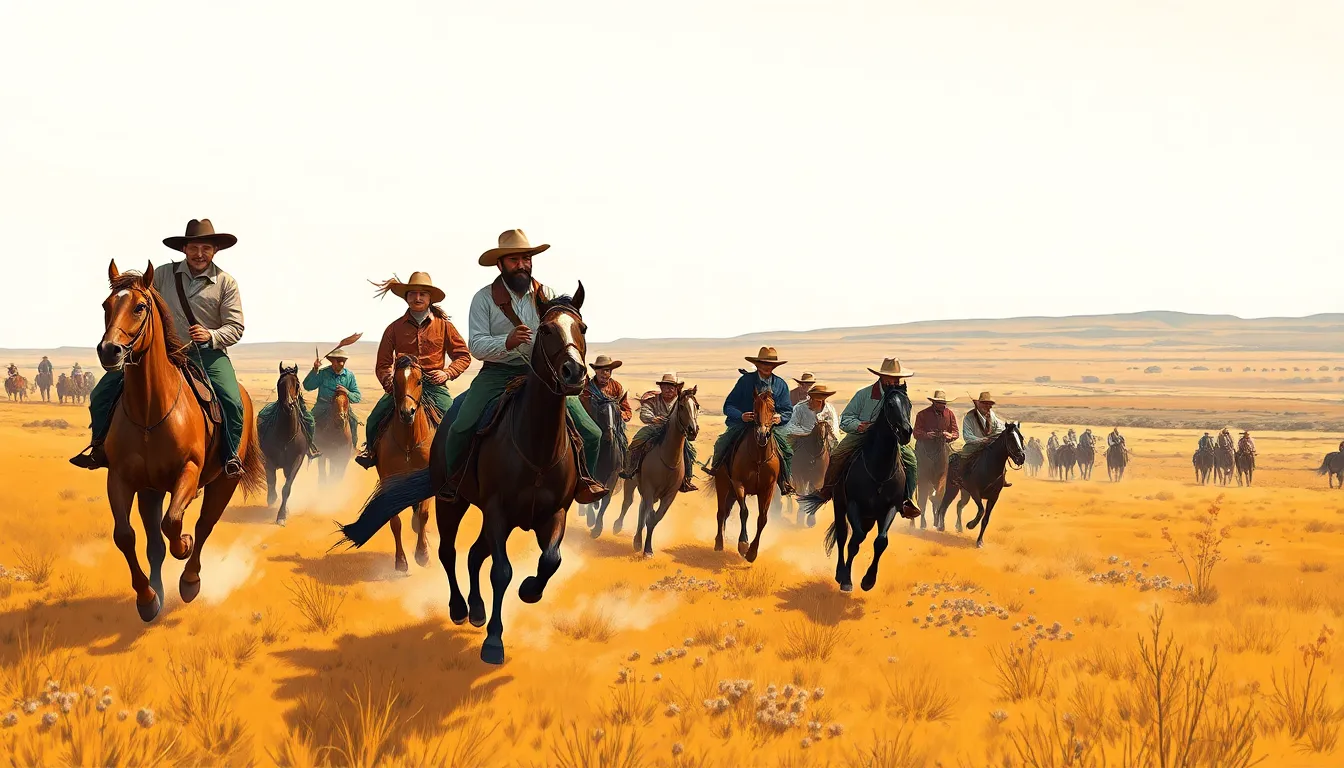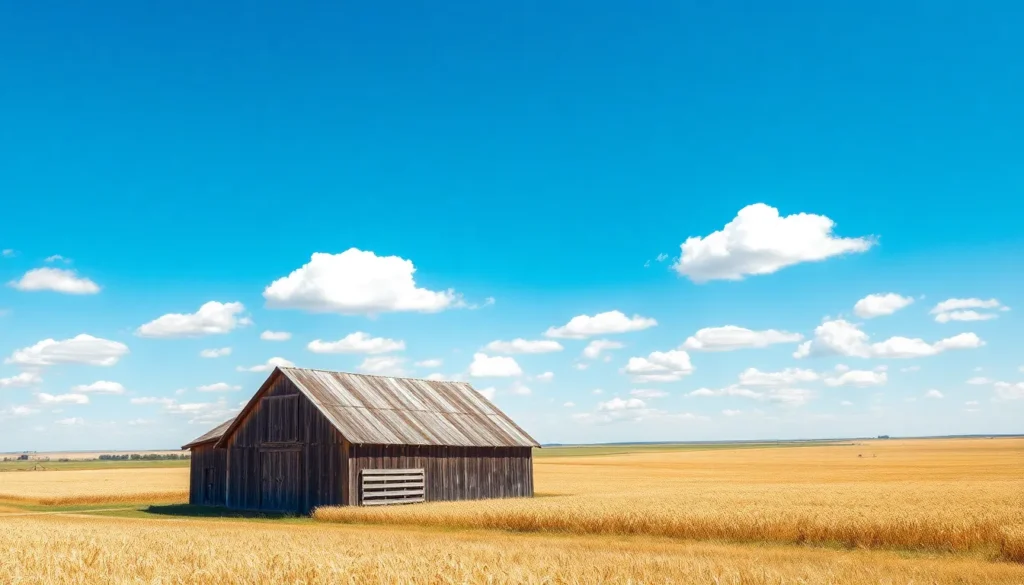Oklahoma might not be the first state that pops into your head when you think of the U.S., but it’s got a unique charm that’s hard to resist. Nestled in the heart of the country, this state is often overshadowed by its flashier neighbors. But don’t let that fool you—Oklahoma is a hidden gem with a rich history and a quirky character all its own.
Table of Contents
ToggleOverview of Oklahoma’s Statehood
Oklahoma achieved statehood on November 16, 1907, becoming the 46th state in the United States. This historic moment followed extensive efforts to settle the territory, first established as Indian Territory in the 1830s. Individuals migrating to the region, known as “Boomers,” played a crucial role in the push for statehood.
The state’s admission marked a significant transition from a territory focused on Native American settlement to a fully recognized state. Various factors influenced Oklahoma’s journey, including its diverse population and economic potential. Settlements grew around agriculture, which became a cornerstone of Oklahoma’s economy.
The state also embraced its cultural heritage, shaped by Native American tribes and early settlers. Over time, Oklahoma’s unique mix of cultures contributed to its rich traditions and festivals. Recognition of this diverse background reflects in various aspects, from cuisine to art.
Prominent events in Oklahoma’s history, such as the Land Runs, attracted attention nationwide. As settlers competed for land, the state’s development accelerated. The impact of these land rushes continues to resonate in Oklahoma’s identity today.
Statehood led to important legislative actions and the establishment of state institutions. As Oklahoma evolved, it faced challenges, including economic downturns and natural disasters. Resilience became a defining characteristic of its citizens, forging a strong sense of community.
Oklahoma’s history serves as a testament to its vibrant past and promising future. From its admission into the union to its ongoing growth, the state’s evolution offers a fascinating glimpse into America’s broader narrative.
Historical Context of Oklahoma

Oklahoma’s history is deeply rooted in early settlement and territorial developments, showcasing a blend of cultures.
Early Settlement and Territory Formation
Settlers began arriving in Oklahoma during the 1830s, as the U.S. government established it as Indian Territory. Native American tribes, such as the Cherokee, Choctaw, Chickasaw, Creek, and Seminole, were relocated to this region through forced removal. The phenomenon known as the Land Runs occurred from 1889 to 1895, where thousands of settlers raced to claim parcels of land. These events accelerated the transition from an exclusively Native American land to one populated by various settlers. By the late 19th century, agriculture became a primary focus, driving further migration and leading to the establishment of towns and communities across the territory.
Path to Statehood
Efforts for statehood gained momentum in the late 19th and early 20th centuries, fueled by rising populations and agricultural prosperity. Advocates known as Boomers sought to end the territory’s status, arguing for its integration into the union. Congressional action facilitated the formation of a constitution in 1906, paving the way for statehood. Oklahoma officially became the 46th state of the United States on November 16, 1907. This marked a significant turning point, shifting governance from a territory focused on Native American affairs to a state concentrated on developing civic infrastructure and a diverse economy.
Oklahoma in the Order of Statehood
Oklahoma’s admission to the United States occurred on November 16, 1907. This state ranks as the 46th state in the union, emerging from extensive efforts for integration and development.
What Number State Is Oklahoma?
Oklahoma claims the 46th position among U.S. states regarding statehood. Admitted in 1907, Oklahoma became part of a growing nation eager for expansion. Its statehood followed years of diverse settlement and significant changes in demographics and land usage.
Comparison with Other States
Nebraska and Utah follow closely behind, occupying the 37th and 45th ranks respectively. Texas, on the other hand, stands as the 28th state, showcasing its earlier entry into the union. Together, these categories display a range of historical and cultural narratives shaping each state’s identity. Oklahoma’s evolution reflects a unique transition from an Indian Territory to a fully recognized state, distinguishing it from its peers.
Significance of Oklahoma’s Statehood
Oklahoma’s entry into the union signifies a critical turning point in both its identity and role within American history. This state embodies a blend of economic and cultural developments alongside significant historical contributions.
Economic and Cultural Impact
Oklahoma has played a pivotal role in agriculture, becoming a major producer of wheat, cattle, and oil. With the discovery of oil, its economy transformed, attracting investment and creating jobs. Additionally, the state’s diverse population has led to a vibrant cultural scene, showcasing influences from Native American traditions and settler customs. Festivals like the Oklahoma State Fair highlight this rich blend, celebrating everything from Native American art to contemporary music. Overall, these economic and cultural dynamics reflect Oklahoma’s unique contribution to the broader American landscape.
Contributions to American History
Key historical events have defined Oklahoma’s journey. The Land Runs in the late 19th century marked a significant shift as settlers vied for land in a region previously designated for Native Americans. These events not only shaped resident demographics but also triggered legislative changes that led to statehood. Moreover, Oklahoma’s involvement in the Dust Bowl during the 1930s underscores the state’s resilience amid challenges. Through these pivotal moments, Oklahoma has continually reshaped its narrative and the larger American story.
Oklahoma stands as the 46th state in the United States showcasing a rich tapestry of history and culture. Its journey from Indian Territory to statehood reflects the resilience and adaptability of its people. The state’s diverse influences have created a unique identity that continues to evolve.
With its agricultural roots and vibrant cultural scene Oklahoma offers a wealth of experiences for those willing to explore. As it moves forward Oklahoma remains a significant player in America’s narrative inviting others to discover its hidden gems and embrace its storied past.

